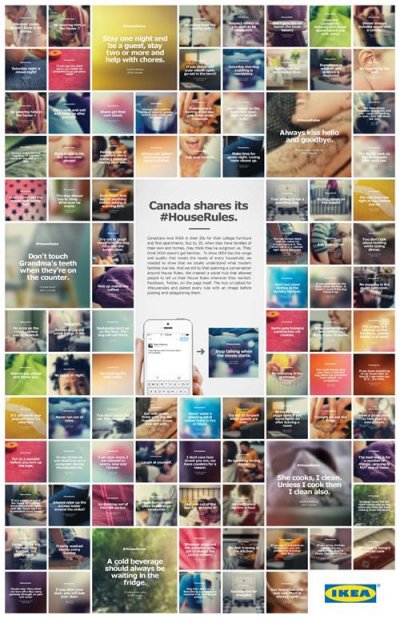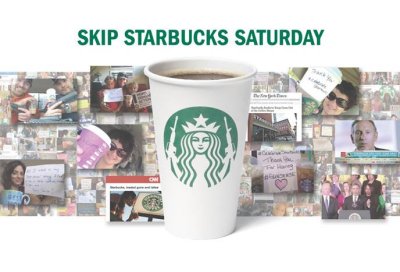The CASSIES (Canadian Advertising Success Stories) were published on warc.com last week. These awards recognise and reward the business effectiveness of advertising. There were 53 case studies in total, which Warc subscribers can view here.
But if you’ve only got time to read a few I highly recommend the following. Grassroots activism, user-generated strategies, newspaper partnerships and storytelling are just some of the themes explored.
Patriotism was at the heart of this campaign for Molson Canadian, the beer brand, which sought to engage with Canadians at home and overseas and to grow market share. How could Molson bring fresh energy to the brand and make it something Canadians – millennials and beyond – would talk about? On Canada Day 2013 Molson launched the Beer Fridge via a series of online videos which documented the fridges journey around Europe where it could only be opened by a Canadian passport holder. Once opened, the beer would be shared with curious onlookers. Leveraging the moments that trigger Canadian identity the fridge also visited a Canadian hockey fan living in Indonesia and the Sochi Winter Olympics, before returning to Canada and where it was modified to only open to the sound of the national anthem. Thus the fridge became a tangible symbol of Canadian identity. Other media included PR, sponsorship, experiential, mobile, social and TV. This emotive and stunt marketing strategy worked: Molson gained share in a segment and category that continued to decline, and generated over $6m in incremental revenue.
IKEA, the furniture retailer, had a problem. Canadians, who once loved the brand had grown up and in turn, had outgrown IKEA. Thus the retailer had fallen off the consideration list. Targeting 35+ year-olds IKEA wanted to get Canadians sharing, talking and reading about all the interesting ‘rules’ that make a house a home. A cross-platform conversation launched with a 60 second TV ad that invited Canadians to share their "House Rules" such as “laugh often”. All user-generated content was showcased on the ikea.ca website and the most popular suggestions were used in various other media. The campaign generated an increase of 12% same-store-sales year-on-year, with key brand intent scores among the 35+ target group improving.

Moms Demand Action for Gun Sense in America: Skip Starbucks Saturday
Moms Demand Action for Gun Sense in America (MDA) wanted to grab the attention of lawmakers, the media and public about the need for more sensible gun laws in the US. In particular, MDA wanted to pressure corporate America to help bring about positive change and so it took aim at Starbucks, the coffee retail chain, who, in the interests of public safety have banned smoking 25-feet from all locations, yet, like many major US retailers, allow their customers to carry firearms. To pressure Starbucks to change their corporate policy, MDA asked moms to skip just one Starbucks visit a week – which could translate to significant financial loss for the business. Thus a social media driven #skipstarbuckssaturday movement became the powerful rallying cry for this grassroots activism. And packaging was a powerful platform - the visual centrepiece of the campaign – MDA changed the iconic Starbucks cup and logo to highlight the brands' lack of #Gunsense. The pressure worked – Starbucks declared a renewed corporate vision that guns were no longer welcome in its stores. All on a budget of $0. BRILLIANT.

Vancouver Police Foundation: Sunglasses
I highlight this campaign for the Vancouver Police Foundation (VPF), a charity in Canada, because it gives a glimpse into the evolving role of the advertising agency. Going above and beyond a mere advertising campaign, DDB Canada created a new product: an iconic line of Vancouver Police Aviator sunglasses. This new product became the centrepiece of the campaign, raising awareness as well as creating a new revenue stream for the VPF. The product became much sought-after and attracted the attention of the younger target audience - 18-34 year olds. TV sponsorship, outdoor, online video and PR supported the promotion. The VPF raised over $152,000 over the two month campaign, and raised $2m at a gala afterwards.

Shreddies, the iconic cereal brand owned by Post Foods, focussed on storytelling in this rebranding campaign that aimed to meet the challenges of a changing breakfast market in Canada. The TV-led campaign told the story of Greg, an ordinary Canadian who was doing good for his local community, and doing so in a genuine, quietly confident way - reflecting the values of the Shreddies brand. The brand added a participatory element by inviting Canadians to nominate someone from their community who was doing good, this led to follow-up stories. This emotive approach helped Shreddies grow volume sales by 8% (against a declining cold cereal segment).

This campaign is well documented but I think it’s worth highlighting again because it shows how Hellmann’s, the Unilever-owned mayonnaise brand, successfully changed Canadian consumers’ perceptions about mayonnaise - from “junk-in-a-jar” to “made with real and simple ingredients”. The brand was perceptive enough to tap into consumers’ increasing appetite for real food and seized the opportunity to reframe the health debate. The Hellmann’s Real Food Movement, targeted Moms with a powerful social marketing campaign that was executed across many channels. From 2007 to 2013, campaigns included creating Urban Gardens, championing local ingredients, and an education program on the benefits of eating more real food. This is an early example of a brand that weaved social purpose into its corporate DNA. The Real Food Movement improved brand perceptions, led to yearly sales increases and Hellmann’s became category leader.
Sélections Chartier: Where no wine has gone before
This case study describes the launch campaign for a new wine brand in Canada. What’s interesting is the product was launched without TV and instead packaging became “the cornerstone of our communication strategy” with support from PR, social media, in-store signage, events and later, a small seasonal newspaper campaign. All communications made the wine buying process easier by showing the foods that best matched each wine. This informative and “scientific” approach helped boost the sales of the wines in a highly competitive market.
Koodo Mobile: Koodo Community - Building brand love in an unexpected place
I highlight this case study as it is an interesting innovation in the all-important customer service/customer experience realm. Aware that customer service is a particular area of dissatisfaction, Koodo, the Canadian mobile telecoms company, saw this as a major opportunity to build a meaningful relationship with customers as well as stand-out from competitors, drive brand advocacy, and reduce operational costs. So the “Koodo Community” was born – a self-sustaining peer-to-peer customer support community which would be the sole destination for all mobile-related questions and answers. The most engaged members received recognition and rewards. The Koodo community now receives 99.96% of all inquiries and is five times faster in providing help than using the call centre; also Koodo Community's likelihood-to-recommend score increased by 8.7%.
OKA: Quebec's original treasure, since 1863
OKA, a Canadian cheese brand made by Agropur, wanted to reposition from a ‘special occasion’ cheese to one that Quebecers could enjoy as a daily snack. To do this, OKA had to deviate from its usual emphasis on heritage and instead developed TV executions that depicted the brand in less elitist situations. A humourous and slapstick tone conveyed the message that the cheese can be consumed by ordinary people, in ordinary situations. This TV-led campaign was supported by point of sale. In five months there was 35% growth in volume in the highly saturated market of Quebec.
TD Bank: Real Estate Secured Lending 2013 Campaign
This case study describes the launch of TD Bank’s 'Dear Mortgage' campaign in Canada which wanted to differentiate its mortgage offers from those of its competitors and redefine the relationship homeowners have with their mortgage. What's interesting about this campaign is it's use of print media which played a particularly significant role - rather unusual in present day (Western) ad campaigns. The Bank partnered with Metro newspaper in a 10 week content series called "Mortgage Matters" with the purpose of educating readers on the first time home buying process and consideration. Media support came from OOH, POS, banners and social media. Total mortgage entered deals exceeded forecast at 115% over 13 weeks.
La Presse Limitée: La Presse+ launch
I highlight this campaign for La Presse, a French language newspaper in North America, which needed to respond to the digitally-driven shift in newspaper habits. So it develop a tablet app but, unlike other newsbrands, it didn't just port content to the app - it changed the way it developed news to create an intuitive tablet experience. What’s interesting is how it created awareness and support for this new product. It strategically targeted three niche audiences: innovative “early adopters” who would become brand ambassadors to attract the “early majority” and then the “late majority”. After 6 weeks, 58% of people in Montreal (Canada's French-speaking centre) knew about the app; after 120 days it was present on more than 250,000 tablets (and 500,000 within a year).
Ubisoft, the video game developer, needed to engage gamers and sustain their interest for its new game, Watch_Dogs, in Canada. I highlight this case study because Ubisoft eschewed traditional launch media such as TV and print in favour of mobile app development which was considered more appropriate for the target audience. The app became a dedicated communications channel that allowed Ubisoft to bring the premise of the game to life, in the real world, and also enabled communication with gamers via in-app push messages in the form of weekly challenges, live-streams and mission videos. The app was downloaded over 200,000 times, demonstrated sustained engagement and delivered pre-sales five times the industry norm.

